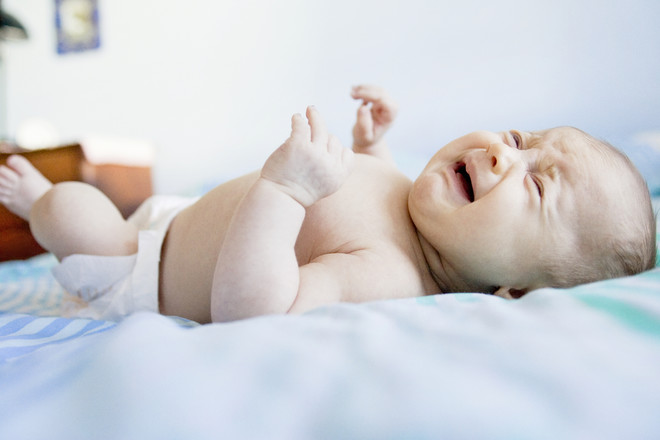 Poor sleep and increased excitability in a child are notare considered signs of rickets Photo: Getty The causes of this disease are considered to be both a lack of vitamin D (cholecalciferol) and a deficiency of calcium and phosphorus. Without the "sunshine vitamin", minerals are not absorbed by the body, which provokes the development of rickets.
Poor sleep and increased excitability in a child are notare considered signs of rickets Photo: Getty The causes of this disease are considered to be both a lack of vitamin D (cholecalciferol) and a deficiency of calcium and phosphorus. Without the "sunshine vitamin", minerals are not absorbed by the body, which provokes the development of rickets.
Rickets in infants: causes of development and risk groups
The disease most often affects children with dark skin.skin tone than fair-skinned and red-haired babies. This is due to the fact that dark-skinned babies have more melanin in their skin, which prevents the production of vitamin D. The main causes of rickets are:
- Deficiency of cholecalciferol;
- lack of calcium and phosphorus;
- lack of sunlight;
- violations of the production of vitamin D;
- diseases of the thyroid and parathyroid gland;
- adverse environmental conditions in the child's place of residence.
Lack of calcium, phosphorus and vitamin Dcompensated by taking special medications, following a daily routine and eating a healthy diet enriched with nutrients. Cholecalciferol, phosphorus, and calcium in quantities optimal for a breastfed baby are contained in mother's milk and in high-quality adapted milk formulas. Babies growing up in the Far North and Transbaikalia suffer from rickets more often than infants born in central Russia and in the South. Also, children born in large cities and industrial centers with high air pollution are at risk. Such children are predisposed to rickets due to a lack of sunlight. Therefore, doctors recommend that they additionally take vitamin D as a preventive measure, in a single daily dose of 500 IU.
Signs of rickets in infants
A visual examination by a doctor cannot be a reasonto establish a diagnosis. To confirm it, the amount of vitamin D, phosphorus and calcium in the body is determined using blood tests. Additionally, the baby is sent for an X-ray examination of the joints of the arms or legs. The main symptoms of rickets, based on which the specialist prescribes an examination:
- Softening of the skull bones;
- the appearance of seals on the ribs;
- an enlarged abdomen ("froggy" abdomen);
- change in the shape of the frontal and parietal tubercles - the head takes on the shape of a square;
- slowing growth;
- low muscle tone;
- curving legs and handles;
- later teething with a bad enamel, in the future such teeth are quickly destroyed.
In the photo, the signs of rickets are often confused withsymptoms of other diseases. Therefore, in the case of this disease, additional research is required. Rickets is not accompanied by excessive sweating. The first symptom of the disease is a change in the chest and abdomen shape. At the slightest suspicion of rickets, consult a pediatrician or pediatric surgeon. Self-administration of vitamin D, calcium and phosphorus leads to their excess in the body, which is also harmful to the health of the baby. The best prevention of rickets is frequent walks in sunny weather in the fresh air and breastfeeding or feeding with adapted mixtures. Additional intake of vitamin D and minerals is possible only if prescribed by a doctor. It is also useful to know:









